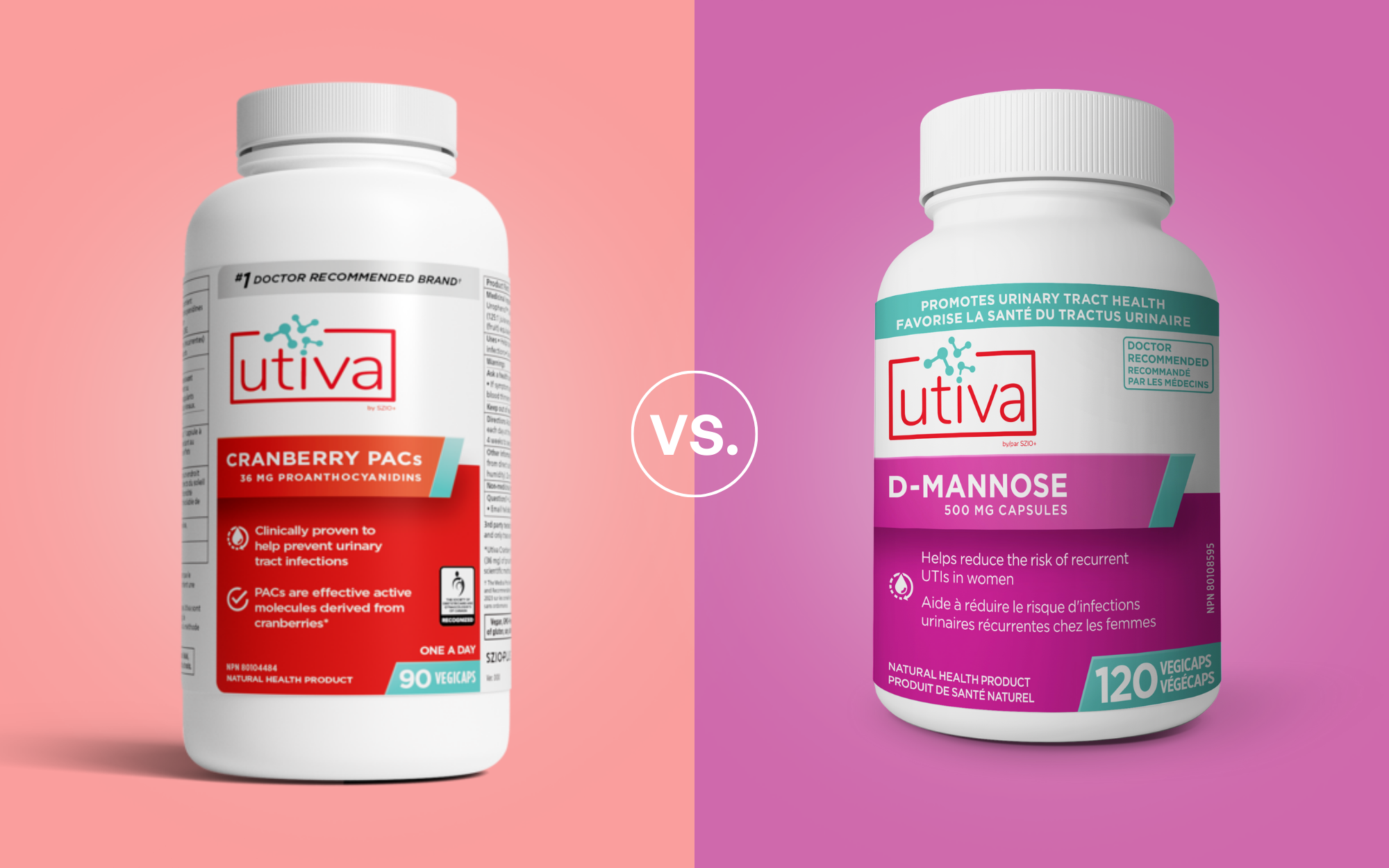Team 36 mg PACs or Team D-mannose?

Written by Board Certified Urologist Dr. Dana Rice
Ask anyone who has a history of urinary tract infections (UTIs) and they will tell you, “I don’t care what you want to give me, make this feeling stop!!” The common themes are, why does this pain only come after hours and on the weekend? Why does every Google search give me a different treatment or prevention plan? How come drinking lemonade upside down on Thursday night works for her and not me? How many different antibiotics and treatment courses can be recommended for the same problem? As a urologist, mother with a pack of female friends, I hear these and similar questions regularly at work and home.
Here is what I know about UTIs. Not everyone will fit into a textbook definition of lower tract infection. In other words, sometimes it hurts, but not because of a bacterial infection. Not everyone improves with standard antibiotic treatments. Not everyone needs antibiotics. Sometimes bacteria can be good for you and treating infections can make your symptoms worse. Sometimes there are other sources for pain, blame your hormones, sexual encounters, bowel habits or muscle/pelvic pain.
I recommend everyone who has pelvic pain, pressure, urinary frequency, urinary incontinence, urethral pain and discomfort with sex work closely with their physicians or specialist to develop a catered personal management plan. Once you have a plan, things are not always straightforward either, which is frustrating. What supplements work, when do I take supplements, why am I a self-start antibiotics person when my friend with the same problem is not, how can get break this cycle and get off antibiotics?
The tough part here is that UTIs are difficult to study in a randomized controlled fashion. (It is hard to tell patients when to have sex believe it or not ;-) So although science is always best, there are just some plain old art of medicine suggestions that I would like to review. These suggestions may not work for everyone, but at least it is guidance based on more than 7 years of urologic practice.
36mg PACs have been shown to help with recurrent infections. If you have frequent infections, this product is a great start. It is great for urinary health and has essentially zero side effects. It also has been shown to be effective with different types of bacteria. I recommend taking it daily. Many of my patients chose to remain on PACs supplements because they are so happy with the results.

D-Mannose has clinical trials that are not as definitive, but in real life practice, I love to use D-mannose for people who have E. coli infections. I find that many of my patients who have UTIs related to intercourse do well with this product. I recommend 1000 mg a day for prevention and 2000 mg a day for symptoms or if you know you will be having more intercourse than normal, ie. traveling etc. Often my patients can significantly reduce symptoms and infections by learning their triggers and adjusting their dose accordingly.
Bottom line…. you can always take both. 36mg PACs is team science and D-Mannose is team everyday experience.
Both are safe, natural options that can work to stop various types of bacteria. It is preferred to take D-Mannose or 36mg of PACs a couple of hours from each other as it is not known yet if D-Mannose interferes with the ability of the PACs to work at their optimal level.
Knowledge is power
Sign up to our newsletter to keep learning!

- Choosing a selection results in a full page refresh.
- Opens in a new window.



